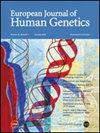儿童血管性埃勒-丹洛斯综合征:评估儿童期诊断和随访的重要性。
IF 3.7
2区 生物学
Q2 BIOCHEMISTRY & MOLECULAR BIOLOGY
引用次数: 0
摘要
血管性埃勒-丹洛斯综合征(vEDS)是一种罕见的遗传性结缔组织疾病,主要由致病性COL3A1变异引起。特征性的动脉和肠道易碎性以及普遍的严重组织易碎性可导致儿童期的临床事件。我们强调了关于诊断为vEDS的儿童的文献缺乏,可能是由于预测测试的限制,并提供了63例(23例指标病例)儿童vEDS的临床和遗传诊断的数据(本文章由计算机程序翻译,如有差异,请以英文原文为准。

Vascular Ehlers-Danlos syndrome in children: evaluating the importance of diagnosis and follow-up during childhood
Vascular Ehlers-Danlos syndrome (vEDS) is a rare inherited connective tissue disorder predominantly caused by pathogenic COL3A1 variants. Characteristic arterial and intestinal fragility and generalised severe tissue friability can lead to clinical events from childhood. We highlight a paucity of literature regarding children diagnosed with vEDS, possibly explained by a restraint in predictive testing, and present data on 63 individuals (23 index cases) with a clinical and genetic diagnosis of vEDS in childhood (<18 years) to address this. Patients were identified through the National Ehlers-Danlos Syndrome (EDS) Service London. We report on 18 events in childhood, recorded in 13 individuals. First events occurred at a median age of 11 years (IQR 0–13) and genetic testing was initiated as a direct result of the first event in 11/13 cases. In the cohort majority, diagnosis was the result of familial genetic testing (55%). Our findings emphasise the importance of offering genetic testing in childhood when there is a positive family history of vEDS and/or features suggestive of a potential inherited connective tissue disorder. Diagnosis in childhood allows for follow-up surveillance and informed multi-disciplinary management, in addition to genetic counselling and patient-led management including lifestyle modification. As seen in adult cohorts, we anticipate children with vEDS will experience the same protective benefit afforded by early diagnosis and present preliminary data on follow-up in childhood. Formal evaluation of the impact that diagnosis of vEDS in childhood has on disease management is needed when sufficient data is internationally available.
求助全文
通过发布文献求助,成功后即可免费获取论文全文。
去求助
来源期刊

European Journal of Human Genetics
生物-生化与分子生物学
CiteScore
9.90
自引率
5.80%
发文量
216
审稿时长
2 months
期刊介绍:
The European Journal of Human Genetics is the official journal of the European Society of Human Genetics, publishing high-quality, original research papers, short reports and reviews in the rapidly expanding field of human genetics and genomics. It covers molecular, clinical and cytogenetics, interfacing between advanced biomedical research and the clinician, and bridging the great diversity of facilities, resources and viewpoints in the genetics community.
Key areas include:
-Monogenic and multifactorial disorders
-Development and malformation
-Hereditary cancer
-Medical Genomics
-Gene mapping and functional studies
-Genotype-phenotype correlations
-Genetic variation and genome diversity
-Statistical and computational genetics
-Bioinformatics
-Advances in diagnostics
-Therapy and prevention
-Animal models
-Genetic services
-Community genetics
 求助内容:
求助内容: 应助结果提醒方式:
应助结果提醒方式:


